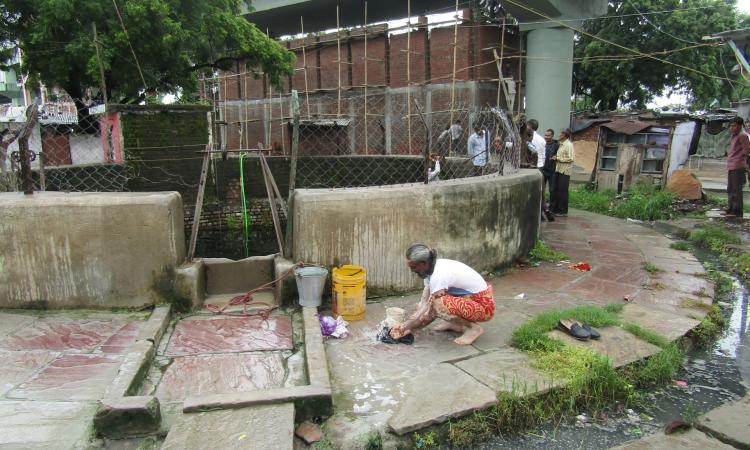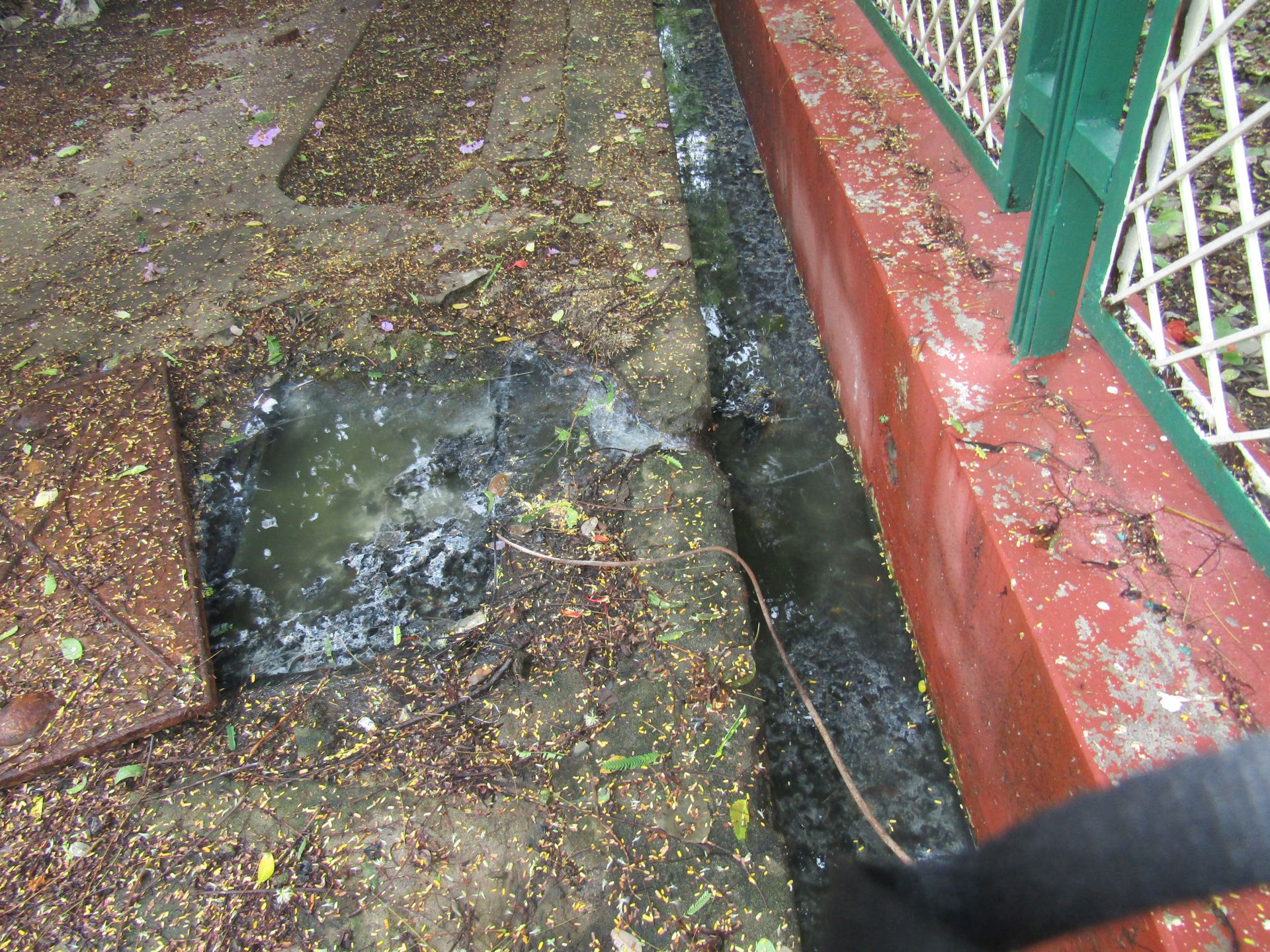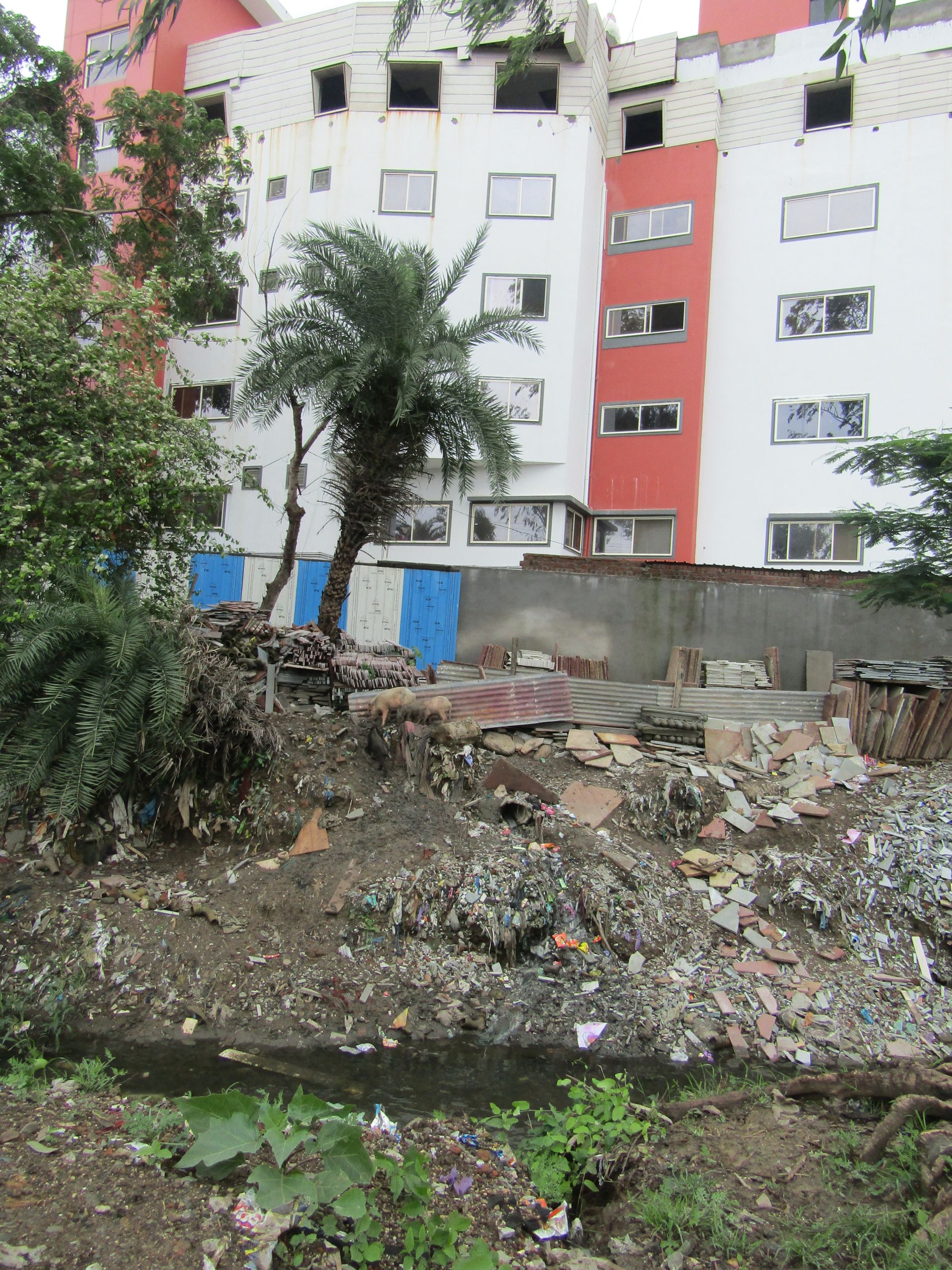
Despite all the hype around Swachh Bharat Mission, the situation on the ground remains dismal. The city of Ujjain is located on the western part of Madhya Pradesh on the Malwa Plateau and is primarily a religious tourism centre due to the Mahakal temple. The temple is not only one of the 12 jyotirlingas in India but also has prominence as the location for the Simhastha Kumbh Mela every 12 years.
Situated on the east bank of the Kshipra river, the city’s spatial growth has taken place in the northern and southern directions. The water supply and storm water drainage for Ujjain is the responsibility of the Madhya Pradesh Public Health Engineering Department (MPPHED). The sources of water supply are a dam on the Gambhir river, a barrage on the Kshipra river, a few tanks and groundwater. The water from the rivers and tanks is treated in a plant before being supplied through a system of overhead tanks and pipelines.

Challenges in water supply and sanitation
The total water capacity of the water supply system is more than double the demand; that is not a problem. The average per capita supply theoretically is also almost double the norm for a city like Ujjain which does not have sewerage but have flush toilets--100 litres per capita per day (lpcd). Given the huge losses in the system, however, the actual supply is much less, especially in the slum areas where there is only intermittent pipe water supply or none at all. The unit cost of this supply in 2015 was Rs 5.50 per litre resulting in a monthly cost of 100 lpcd supply for a five-member household of Rs 83.
As opposed to this, not only is the average monthly water user charge levied by the Ujjain municipal corporation (UMC) lower at Rs 75 without any metering but there is also under collection of this low charge. Only 62.5 percent of the projected revenue from charges was recovered in 2015 as per the records of UMC.
The water pipelines are leaking and there is infiltration of dirty water into the pipelines leading to turbidity and contamination of the water supplied. The laboratory of the MPPHED is ill equipped and understaffed and microbiological tests to determine whether the water is free of bacteriological and virological contamination are not being carried out. As a precautionary measure, the water is being heavily chlorinated before release into the distribution system.

There is no sewerage system or stormwater drainage currently in Ujjain city. There are open drains along the sides of the roads. The waste water from the kitchen and bathrooms and also from the outflow of septic tanks, cumulatively amounting to about 80 million litres per day, is released into these drains untreated with high levels of pollution.
These drains empty into the natural nullahs, which in turn empty into river Kshipra or the many tanks that are there in the city, including the seven main tanks known as the Saptsagar which are perennial because they are situated in alluvial aquifers with high groundwater level. This is in gross violation of the provisions of the Water (Prevention and Control of Pollution) Act 1973 and both government institutions and private organisations are culpable in this regard.
Slums, the worst affected
Both water supply and sanitation are deficient in most of these slums with only about 10 percent of the slum population getting free access to quality water and sanitation. Kala Patthar is a slum of about 170 households situated on the outskirts of the city that is reeling under both water supply and sanitation issues. Earlier the residents used to go for open defecation in the nearby fields. However, these have now been closed in by the owners who are developing them into residential colonies. Therefore, it is only possible to go to these fields at night and so families are being forced to construct toilets. These are mostly poorly constructed pit latrines which are in a bad state. The large number of pit latrines has contaminated the groundwater and now even the handpump water also stinks. So the drinking water has to be brought from afar. There is UMC supply, but it is erratic and insufficient. The water here needs to be properly tested.
As a part of the Jawaharlal Nehru National Urban Renewal Mission, the water supply component was implemented and the supply from the Gambhir dam was augmented as was the capacity of the water treatment plant in Ujjain. Some investment has been made in solid waste management but very little has been done to improve waste and stormwater management.
Then there is the Swacch Bharat Mission (SBM) under which open defecation is to be eliminated through the construction of toilets. Many households have constructed pit latrines under this scheme. However, there are several problems with this scheme--the delayed release of the funds to the beneficiaries, under funding of the scheme so that the beneficiaries have to spend their own money to construct decent usable toilets, some of the toilets are to be built by contractors instead of the beneficiaries themselves which is affecting the quality of construction and finally, the construction of a large number of pit latrines in the alluvial subsoil resulting in the pollution of the groundwater and adversely affecting the quality of open well and handpump water in the slums. In cases where the people have contributed their own money to construct rudimentary septic tanks, the outflow from these is being released directly into the open drains and nullahs creating further health hazards. Disease is rampant in the slums.
The smart city plan which was first mooted in 2015 is the latest initiative. In the public polling that took place as part of the preparation of the smart city plan, the citizens put the highest priority on the improvement of sanitation, way above other services like street lighting, traffic and security.
Huge losses in water supply not only affect the operation and maintenance of the system adversely but also prevent its augmentation due to lack of funds for further investment.
Study recommendations
This brief survey of the WASH situation in Ujjain reveals the serious anomalies in planning, implementation and management of water supply, sanitation and hygiene in the city. The main points that emerge are as follows:
- There is a huge loss of 62.5 percent of the total water supply mainly due to theft and technical losses. Consequently, the slum population which is about 35 percent the total population is woefully underserved, having to rely mostly on their own resources.
- There are no sewage carriage and treatment facilities at present and so the wastewater is being released untreated into the ground and surface water, severely polluting them. Matters have been compounded by the alluvial subsoil resulting in high water table which gets polluted easily and the absence of stormwater drainage which results in frequent flooding of polluted water during monsoon.
- The finances of the UMC are in shambles both with respect to the overall mobilisation of resources and the recovery of user charges for water supply and sanitation with shortfalls in revenue collection exceeding 50 percent.
- The plans drawn up for remedying the situation are economically unviable and environmentally unsound. They are unlikely to be implemented successfully given the lack of political will, financial resources and technical capacity of the UMC.
- The situation in the slums that were surveyed is very poor with lack of good WASH services resulting in diseases.
- Water sensitive urban design principles involving stormwater harvesting and recharge and wastewater treatment and reuse need to be implemented in a decentralised manner with the onus being on organisations and individuals funding their own water and wastewater systems. The UMC should be left with the responsibility of taking care of public spaces and slums.
- Awareness building must be done among the citizens to apprise them of the alternative methods available for WASH management and the pollution control laws should be strictly implemented so that there is greater adoption of these alternatives, especially among those from the affluent sections who can easily do so.
Indore-based water expert Rahul Banerjee has done a study on the water supply and sanitation situation in the city of Ujjain in Madhya Pradesh. Attached here is the complete study.